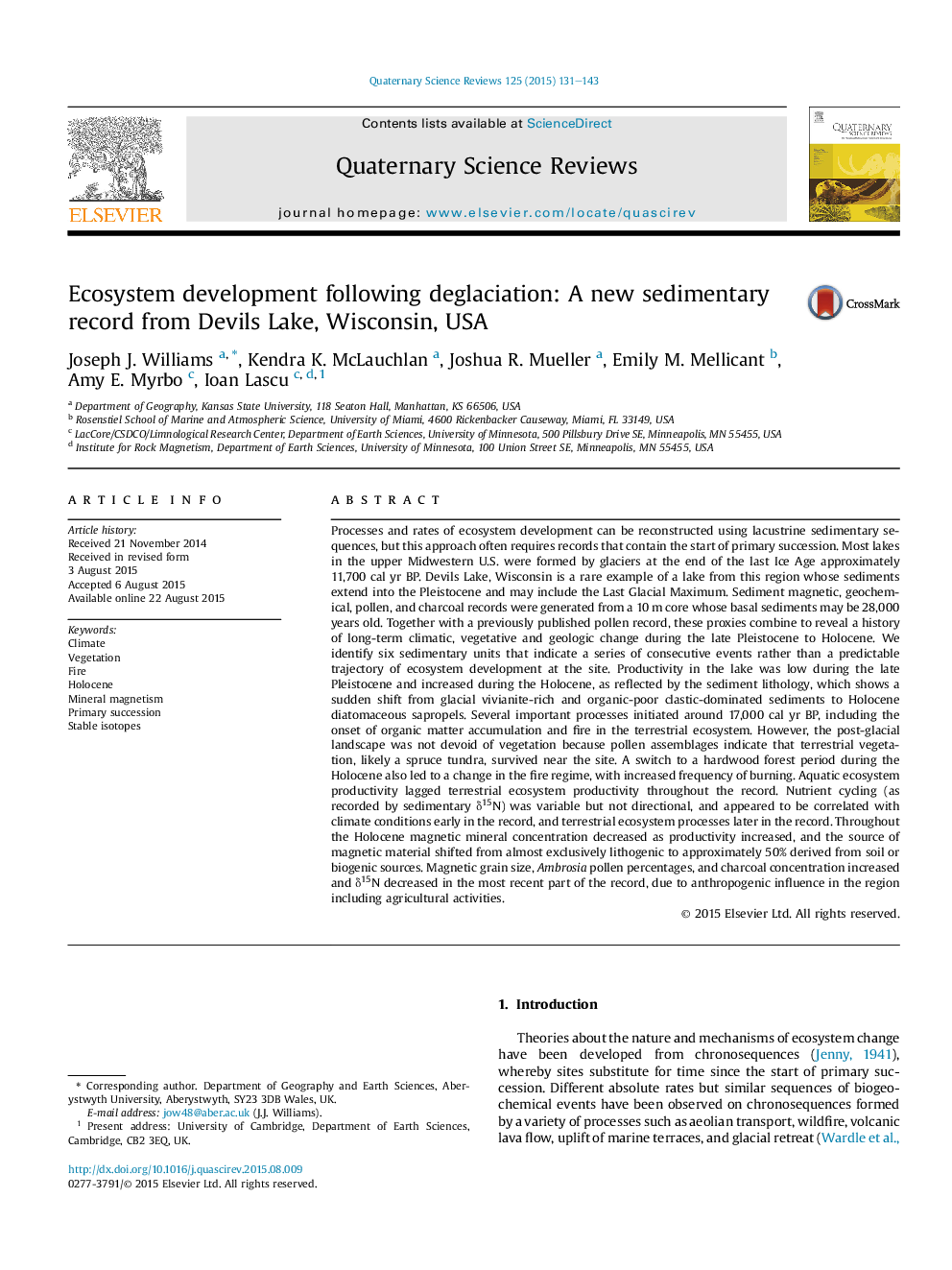| کد مقاله | کد نشریه | سال انتشار | مقاله انگلیسی | نسخه تمام متن |
|---|---|---|---|---|
| 6445497 | 1640809 | 2015 | 13 صفحه PDF | دانلود رایگان |
عنوان انگلیسی مقاله ISI
Ecosystem development following deglaciation: A new sedimentary record from Devils Lake, Wisconsin, USA
دانلود مقاله + سفارش ترجمه
دانلود مقاله ISI انگلیسی
رایگان برای ایرانیان
کلمات کلیدی
موضوعات مرتبط
مهندسی و علوم پایه
علوم زمین و سیارات
زمین شناسی
پیش نمایش صفحه اول مقاله

چکیده انگلیسی
Processes and rates of ecosystem development can be reconstructed using lacustrine sedimentary sequences, but this approach often requires records that contain the start of primary succession. Most lakes in the upper Midwestern U.S. were formed by glaciers at the end of the last Ice Age approximately 11,700 cal yr BP. Devils Lake, Wisconsin is a rare example of a lake from this region whose sediments extend into the Pleistocene and may include the Last Glacial Maximum. Sediment magnetic, geochemical, pollen, and charcoal records were generated from a 10 m core whose basal sediments may be 28,000 years old. Together with a previously published pollen record, these proxies combine to reveal a history of long-term climatic, vegetative and geologic change during the late Pleistocene to Holocene. We identify six sedimentary units that indicate a series of consecutive events rather than a predictable trajectory of ecosystem development at the site. Productivity in the lake was low during the late Pleistocene and increased during the Holocene, as reflected by the sediment lithology, which shows a sudden shift from glacial vivianite-rich and organic-poor clastic-dominated sediments to Holocene diatomaceous sapropels. Several important processes initiated around 17,000 cal yr BP, including the onset of organic matter accumulation and fire in the terrestrial ecosystem. However, the post-glacial landscape was not devoid of vegetation because pollen assemblages indicate that terrestrial vegetation, likely a spruce tundra, survived near the site. A switch to a hardwood forest period during the Holocene also led to a change in the fire regime, with increased frequency of burning. Aquatic ecosystem productivity lagged terrestrial ecosystem productivity throughout the record. Nutrient cycling (as recorded by sedimentary δ15N) was variable but not directional, and appeared to be correlated with climate conditions early in the record, and terrestrial ecosystem processes later in the record. Throughout the Holocene magnetic mineral concentration decreased as productivity increased, and the source of magnetic material shifted from almost exclusively lithogenic to approximately 50% derived from soil or biogenic sources. Magnetic grain size, Ambrosia pollen percentages, and charcoal concentration increased and δ15N decreased in the most recent part of the record, due to anthropogenic influence in the region including agricultural activities.
ناشر
Database: Elsevier - ScienceDirect (ساینس دایرکت)
Journal: Quaternary Science Reviews - Volume 125, 1 October 2015, Pages 131-143
Journal: Quaternary Science Reviews - Volume 125, 1 October 2015, Pages 131-143
نویسندگان
Joseph J. Williams, Kendra K. McLauchlan, Joshua R. Mueller, Emily M. Mellicant, Amy E. Myrbo, Ioan Lascu,